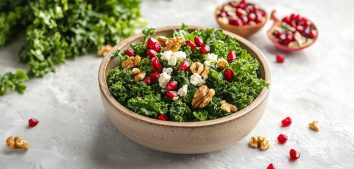
MACA! SUPERFOOD!
Maca is an exotic plant that has gained fame as the next “superfood” because it is exceptionally rich in the components we need.
Thus, its nutrient density is very high. At the moment it is difficult to obtain, thus fairly expensive, but I hope that, in time, both its popularity and supply will increase which, in turn, will push its price down. You can live healthily without it, but it is worth checking out. Not to mention that a single portion is tinier than you think!
General description:
Maca (Lepidum peruvianum) has been grown in South America in the Andes for over 2,000 years. It grows at an altitude of 4,000 – 4,500 meters above sea level. It belongs to the family of cruciferous vegetables, just as kale, broccoli, cabbage, and cauliflower.
Dried maca root is comprised of carbohydrates (59%), protein (10%), and fiber (8.5%). Fats constitute about 2.2% of the composition.
Matzah is rich in calcium, magnesium, phosphorus, potassium, sodium, iron, sulfur, zinc and vitamins B1, B2, C, and E.
Although this plant is not high in protein, thanks to its amino acid content (18 in total, including 7 exogenous ones) it may be recommended to those who eliminate animal protein from their diet.
Because of its energizing effects it may be recommended to people whose lives involve considerable physical or mental effort.
So far, studies suggest that the use of maca root can be particularly beneficial for:
- people with raised blood pressure – the compounds contained in the root affect the vasodilatation of blood vessels, leading to a decrease in blood pressure
- women who are less tolerant of the symptoms of menopause and PMS
- physically active people – maca root’s sterols, whose effects are similar to that of anabolic steroids, may help in increasing muscle mass
- thanks to its isothiocyanate content, maca root may be useful in the prevention of cancer
- Because of its energizing effects it may be recommended to people whose lives involve considerable physical or mental effort
- maca is considered an aphrodisiac because it increases blood supply to the genitals
- maca root’s components may favorably affect the functioning of the hypothalamus and pituitary gland, optimizing the ways organs such as thyroid, ovaries and testicles, among others, work
- maca root has a beneficial effect on fertility in both women and men
How to use:
When powdered, maca root can be used as an addition to cocktails, salads and drinks.
It should not be subjected to the heat treatment because it has a negative effect on the health-promoting compounds contained in the root.
Maca may also be used as an emulsifier – it facilitates the process of combining fat with starch.
Dosage:
It is recommended to start with 500 mg per day and next gradually increase it to 3,000 mg. Regular supplementation produces the greatest results.
Safety:
So far, studies show that maca possesses no toxicity to human health, even after long-term supplementation. However, since appropriate studies proving the safety of maca for pregnant women have not yet been conducted, maca root is not recommended to expectant mothers.










Comments No Comments
Join the discussion…